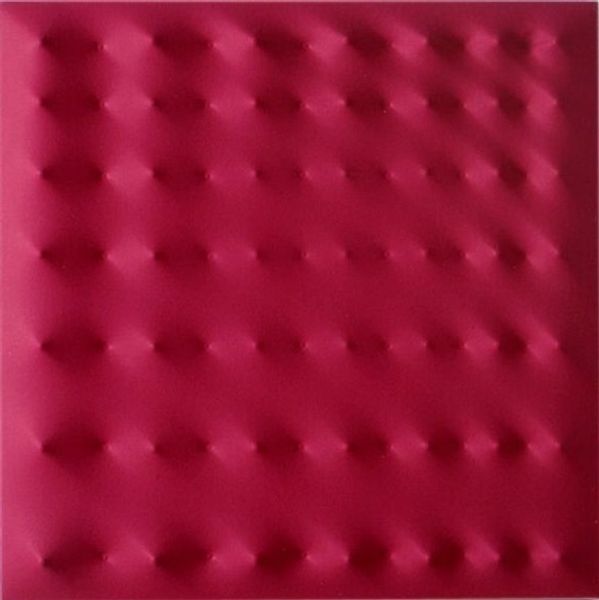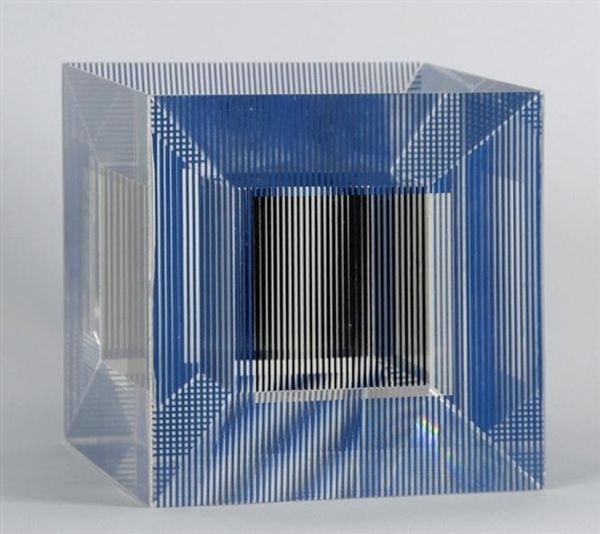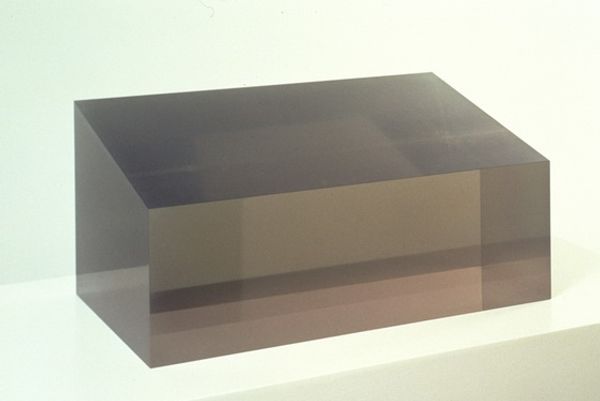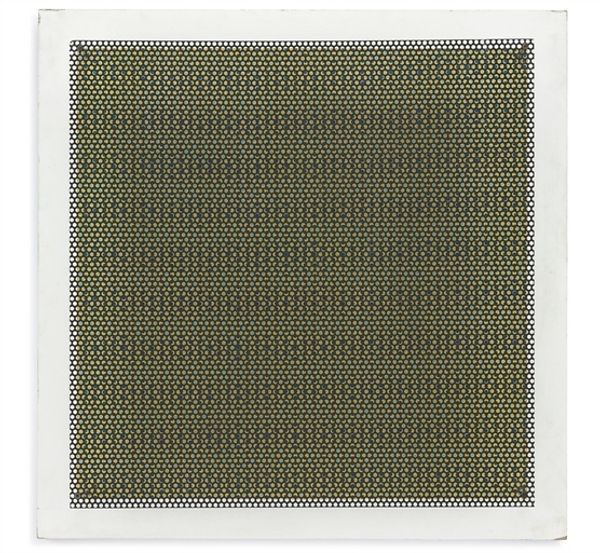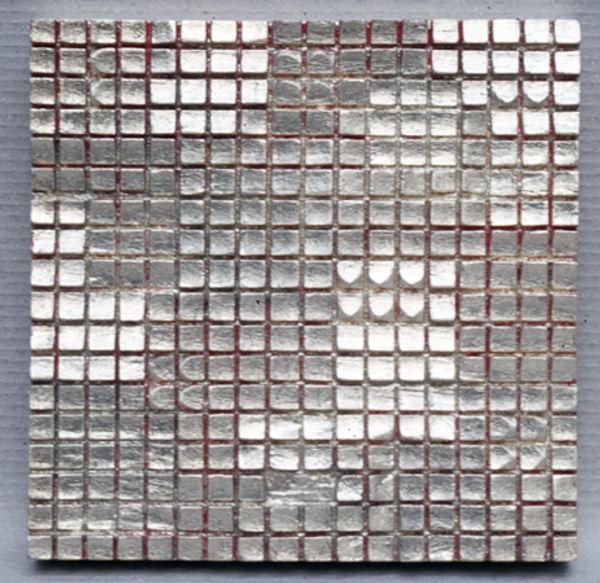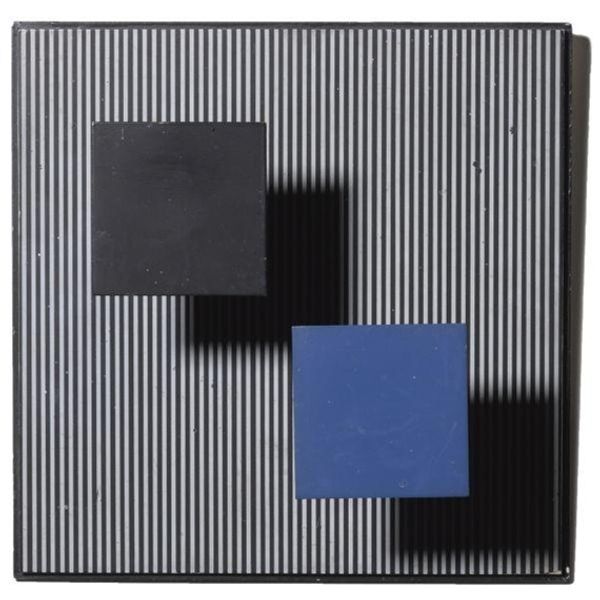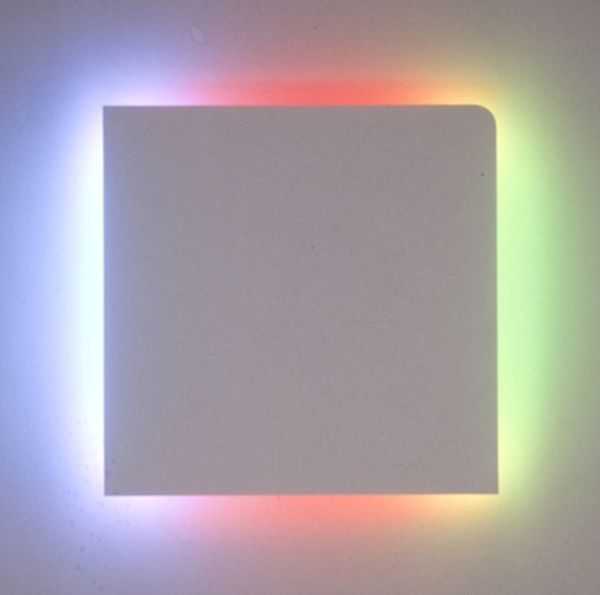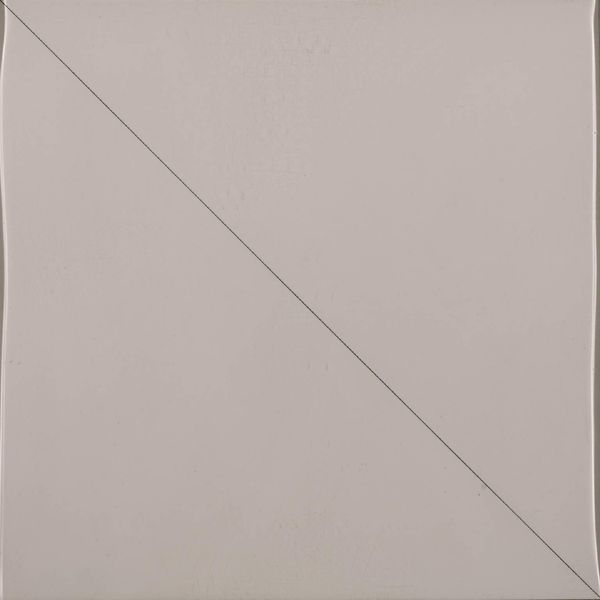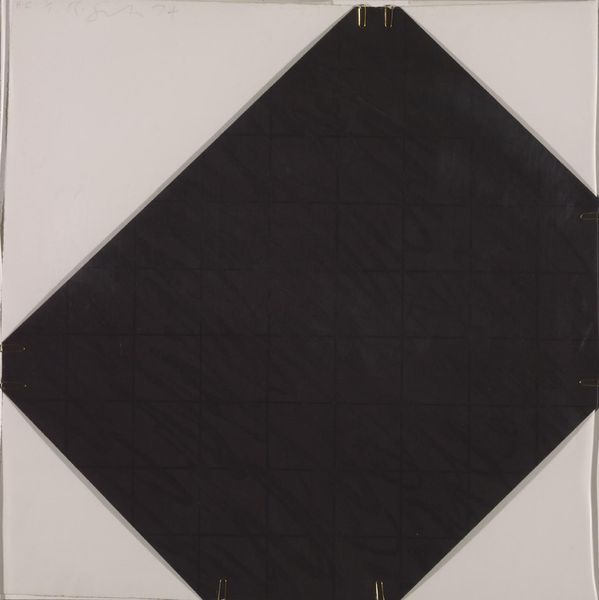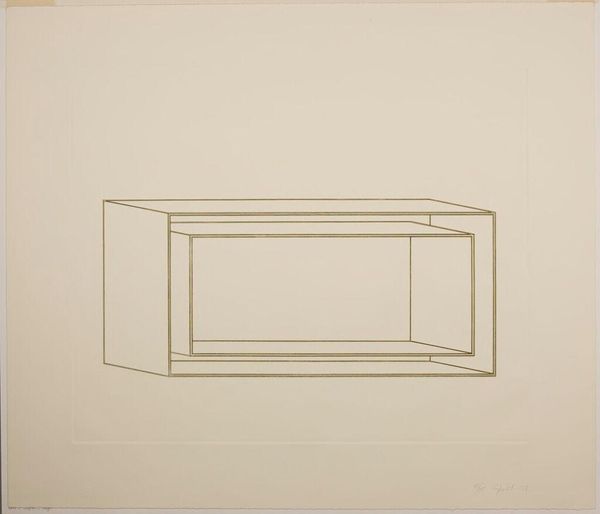
installation-art
#
light-and-space
#
non-objective-art
#
conceptual-art
#
minimalism
#
geometric
#
installation-art
Copyright: Dan Flavin,Fair Use
Curator: Here we have Dan Flavin's "Icon V (Coran's Broadway Flesh)," created in 1962. My first thought is, "understated luminosity." Editor: Understated is an interesting word choice. To me, there's something stark about its simplicity. It seems almost... cold? But that may be influenced by what I know about Flavin's biography—his religious upbringing and later rejection of organized religion. The “Icon” series might be a critical engagement with his past, especially since it has no representational content. Curator: I see your point, but my interpretation leans toward something more detached. Consider the industrial materials. A rectangular plane with incandescent bulbs gives it an undeniably clean, even severe geometry. This aligns perfectly with the tenets of minimalism. We should remember that non-objective abstraction, stripped of almost any traditional painterly gesture, forces us to consider form and light above all else. Editor: True, but let's think more broadly about its impact. "Coran's Broadway Flesh"—it's such a loaded subtitle, pointing to Coran’s art, which celebrates queer sexuality during a time when homosexuality was still deeply closeted. It could be interpreted as a subtle comment on the queer aesthetic versus minimalist purity. Also, consider what the deliberate use of serial incandescent lights signifies—an emphasis on consumption or the deconstruction of modern visuality? Curator: I appreciate the sociocultural context, and it can certainly deepen our experience of art, but this piece transcends those constraints. It’s about line, form, and the interplay of light. Do we reduce it to only this specific social commentary, thereby overlooking its powerful non-referential properties? Editor: Absolutely not, but acknowledging these broader, interwoven, social histories allows for an informed critique. It invites us to see how movements like Minimalism never existed in a vacuum—but interacted in subtle and sometimes invisible ways with contemporary movements from across culture. Curator: That's something for the viewer to meditate on in any case. It may look unassuming, but Icon V continues to spark interesting questions regarding how we create, and receive, images of meaning. Editor: Exactly, and this artwork's apparent starkness belies a network of complex historical references that is very satisfying to unravel and ponder further.
Comments
No comments
Be the first to comment and join the conversation on the ultimate creative platform.
